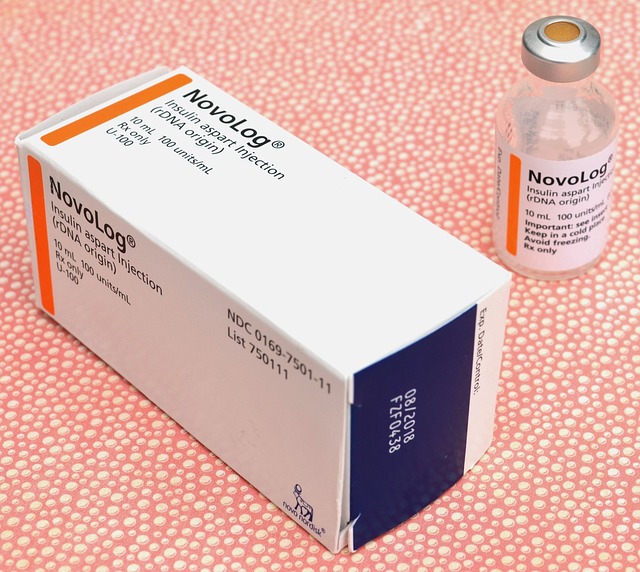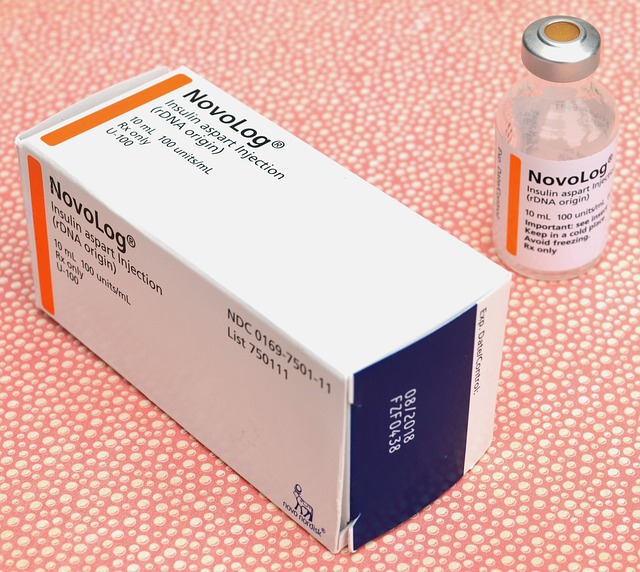Semaglutide medication is a groundbreaking natural hormone mimic that transforms diabetes management by slowing gastric emptying and boosting insulin production. Beneficial for type 2 diabetics, it offers significant weight loss potential and reduces the risk of complications. Dosage should be carefully considered and adjusted based on patient responses, with regular glucose monitoring. Administered via weekly subcutaneous injection, semaglutide requires education on proper injection techniques. Regular monitoring and close communication with healthcare teams are crucial for optimal management, as side effects like nausea or weight loss can be managed with support.
“Unraveling the Power of Semaglutide: A Game-Changer in Diabetes Care. This comprehensive guide delves into the world of semaglutide, a groundbreaking glucagon-like peptide-1 (GLP-1) receptor agonist. We explore its pivotal role in diabetes management, highlighting how it naturally lowers blood sugar levels. From understanding its mechanism to deciphering dosage and potential side effects, this article equips you with insights on incorporating semaglutide medication into your care plan for effective long-term diabetes control.”
Understanding Semaglutide: A Glucagon-Like Peptide-1 Receptor Agonist

Semaglutide is a groundbreaking medication that plays a significant role in diabetes care, particularly for individuals with type 2 diabetes. As a Glucagon-Like Peptide-1 (GLP-1) receptor agonist, it mimics the natural hormone GLP-1, which is produced by the gut after eating. This imitation helps to regulate blood sugar levels by stimulating insulin production and suppressing glucagon release. By doing so, semaglutide enhances insulin’s ability to lower blood glucose, offering a valuable tool in managing diabetes.
The medication is known for its once-weekly administration, providing convenience and improved patient adherence compared to more frequent injections. Its long-acting nature ensures consistent blood sugar control throughout the week. Clinical trials have demonstrated semaglutide’s effectiveness in reducing HbA1c (a marker of long-term blood glucose control) and promoting weight loss, making it a valuable addition to a comprehensive diabetes care plan.
How Semaglutide Works in Diabetes Management

Semaglutide, a medication that mimics a natural hormone, plays a pivotal role in diabetes management. It works by slowing down the rate at which the stomach empties its contents into the small intestine, leading to increased feelings of fullness and reduced hunger. This delay in gastric emptying helps lower blood sugar levels after meals, as the body has more time to process glucose effectively. Additionally, semaglutide promotes the production of insulin, especially in response to high blood sugar, facilitating glucose uptake by cells and further lowering blood sugar levels.
The medication is particularly effective for individuals with type 2 diabetes who require additional support in managing their condition. Its dual action of delaying gastric emptying and enhancing insulin secretion offers a comprehensive approach to blood sugar control. Furthermore, clinical trials have shown that semaglutide can lead to significant weight loss, providing an added benefit for patients often struggling with obesity, a common comorbidity associated with type 2 diabetes.
Benefits of Incorporating Semaglutide into Your Care Plan

Incorporating semaglutide medication into your diabetes care plan offers significant advantages. Semaglutide, a glucagon-like peptide-1 (GLP-1) receptor agonist, mimics the effects of a natural hormone produced by your gut after eating. This not only helps to lower blood sugar levels but also promotes feelings of fullness, leading to weight loss—a key benefit for managing type 2 diabetes effectively.
Additionally, semaglutide reduces the risk of several diabetes-related complications. By slowing gastric emptying, it aids in digestion and can help prevent hypoglycemic events. Studies have shown that semaglutide treatment significantly decreases the incidence of cardiovascular events, making it a valuable addition to comprehensive diabetes care plans, especially for those at high risk.
Dosage and Administration: Optimizing Semaglutide Therapy

Semaglutide medication, a key component in diabetes care, requires careful consideration of dosage and administration for optimal therapeutic effects. The starting dose is typically low, allowing patients to build tolerance gradually. This gradual approach helps minimize potential side effects commonly associated with semaglutide therapy, such as nausea or diarrhea. Healthcare providers adjust the dosage based on individual patient responses, aiming for a balanced reduction in blood sugar levels without causing adverse reactions.
Regular monitoring of glucose levels and close communication with healthcare teams are essential during this process. As patients become accustomed to the medication, their bodies may require higher doses to achieve desired results. The administration method is also crucial; semaglutide is usually administered once weekly by subcutaneous injection, offering a convenient and effective delivery system. Patients should be educated on proper injection techniques and provided with clear instructions for self-administration to ensure adherence to their diabetes care plan.
Monitoring and Adjusting Semaglutide Treatment

Effective diabetes management requires regular monitoring and adjustments, especially with medications like semaglutide. This injection provides significant benefits in blood sugar control but demands close observation to ensure optimal dosages and minimal side effects. Healthcare providers often recommend frequent checks of glycemic levels to tailor semaglutide treatment accordingly. Patients may need to adjust their doses based on the readings, meal plans, and physical activity levels.
The process involves striking a balance to maintain blood sugar within target ranges. Regular communication between patients and healthcare teams is crucial for successful management. By closely monitoring responses to semaglutide medication, individuals can achieve better diabetes control, enhance overall well-being, and reduce the risk of complications associated with prolonged high blood sugar levels.
Potential Side Effects and Management Strategies

Many individuals on a diabetes care plan involving semaglutide medication experience potential side effects, which is normal for any treatment. Common ones include nausea, vomiting, diarrhea, and constipation. These symptoms often subside as your body adjusts to the medication. However, if they persist or worsen, it’s essential to consult your healthcare provider. They can offer management strategies tailored to your needs, such as adjusting dosage or suggesting additional support.
Additionally, weight loss is a known effect of semaglutide, which can be both a benefit and a concern for some patients. Regular monitoring of weight changes and open communication with your care team can help manage this. They may suggest dietary adjustments or physical activities to maintain a healthy weight while ensuring blood sugar levels remain well-controlled.
Semaglutide's Role in Long-Term Diabetes Control

Semaglutide, a medication that has gained significant attention in diabetes management, plays a pivotal role in long-term diabetes control. It works by mimicking a natural hormone that helps regulate blood sugar levels. This innovative approach goes beyond traditional insulin therapy, offering a once-weekly injection that can provide sustained blood sugar control for up to 4 weeks.
The medication’s ability to reduce HbA1c (a measure of long-term blood sugar control) makes it a valuable addition to comprehensive diabetes care plans. Clinical trials have shown significant improvements in glycemic control while also aiding in weight management, addressing a common challenge for individuals with type 2 diabetes. Its convenience and effectiveness make semaglutide a game-changer for many patients striving to manage their condition effectively over the long term.
Patient Education and Lifestyle Considerations

Patient education is a cornerstone of managing diabetes effectively, especially with the use of semaglutide medication. This innovative treatment requires patients to understand its mode of action and how it interacts with their bodies. Healthcare providers should educate patients about the importance of regular monitoring of blood sugar levels, as this helps in adjusting dosages and maintaining optimal control. Additionally, teaching patients about lifestyle modifications, such as a balanced diet and regular exercise, empowers them to actively participate in their care.
Lifestyle considerations play a significant role in diabetes management alongside medication. For instance, adopting a healthy eating plan tailored to their condition can significantly impact blood sugar levels. Encouraging physical activity not only aids in weight management but also improves overall health. Patients should be advised on when and how to take semaglutide, potential side effects to watch out for, and when to seek medical attention. These educational aspects ensure that patients feel supported and equipped to handle their diabetes while reaping the benefits of modern treatments like semaglutide medication.
